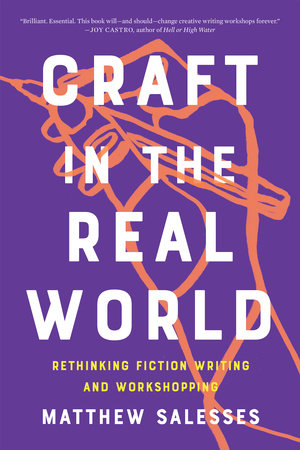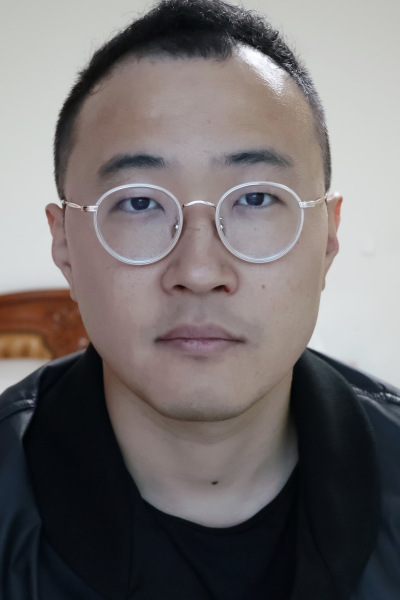Craft in the Real World Review
Ana Hein // Blog Writer
I am a Creative Writing major currently enrolled in my fifth writing workshop at Emerson; I took my first one as a second-semester freshman, and am now a second-semester junior. Their topics run the gamut of writing forms: nonfiction, fiction, poetry, even travel writing. I can’t say I was brilliant at all of them, or most of them, but I learned something from all of them, if only: “This is something to completely and totally avoid.”
A college writing workshop typically goes like this: you create a short piece in accordance with the topic of the class; you hand it out to the rest of your peers; they read it and mark it up; they give you verbal feedback on it at the next meeting while you sit in total silence. That’s right: if your piece is the one being workshopped, you can’t ask questions, defend your decisions, nothing. Sometimes the professor assigns readings from professionally published authors; sometimes you have debates about the nature of the writer’s duty or what constitutes “truthful” writing; sometimes you do in-class writing exercises along the lines of, “write about a memory you don’t know why you remember,” or, “copy down lines from other books you like and combine them into a short poem.”
Granted, I didn’t hate most of those classes—I only truly despised one of them (you would too, if your professor compared an innocuous short story about going to the moon to something Hitler might write). I produced at least one piece I’m proud of in each of them. But in more than one, I’ve found myself wondering what I was taking away from the class besides my work. What skills was I learning that would better my craft, that would help me during the writing process?

Then I read Craft in the Real World: Rethinking Fiction Writing and Workshopping by Matthew Salesses (who, fun fact, is an Emerson alum), and I realized how fucked up the institution of the workshop is.
According to Salesses, the history of the writing workshop in America goes back to (what else but) the Iowa Writers Workshop: the first place to formalize the instruction of creative writing, and still one of the most well-regarded and well-known writing programs in the country. The program used art as a way to promote the individual and combat communism, while also promoting the idea that the craft was non-political. But everything is political (even being non-political is, itself, a political stance), especially the kinds of writing we teach, and therefore, implicitly prioritize. Why do we value prose with few adjectives or character-driven plots that show instead of tell? Where does that leave other literary traditions that, historically, don’t follow these rules? What if a writer isn’t writing for the audience typically present in a master’s workshop (i.e. the cis, straight, white man)? What happens when we silence writers whose work is at the center of a discussion, writers who may have been historically silenced in other ways? How can we improve how we teach writing at the college level in America? These are the questions Salesses poses to the reader—and to the writer.
Though Salesses offers many definitions of craft throughout the course of the book—one of the chapters is literally called “What is Craft? 25 Thoughts”—the expanded definition he gives in the preface not only gives the term its meaning, but partially explains the point of the book itself: “What we call craft is in fact nothing more or less than a set of expectations. Those expectations are shaped by workshop, by reading, by awards and gatekeepers, by biases about whose stories matter and how they should be told. How we engage with craft expectations is what we can control as writers. The more we know about the context of those expectations, the more consciously we can engage with them.” Craft in the Real World is all about encouraging the reader—the writer—to push beyond the stereotypical writing taught in universities, because those standards are not all-encompassing: they let many storytelling traditions—ones that are not straight, cis, white, and American or European—fall to the wayside. Salesses breaks down craft terminology, from plot to characterization to believability, in a way that negates their too-frequent usage to deem stories following different traditions as “bad writing.” He takes away the idea that what we consider “good writing” was created in a vacuum, exposing how it just so happens to come from and cater to the straight, cis, white audience.

But Craft in the Real World doesn’t stop at reconfiguring how you think about craft. It also recontextualizes the way a traditional workshop is run, in a section specifically aimed at teachers. Salesses gifts the reader—the professor—with an example syllabus that explains how to put the focus back on the writer and the process of writing, rather than the incomplete product of their work; a plethora of alternatives to the traditional workshop model; and writing exercises for drafting and revising. Should I ever find myself in the position of teaching a creative writing workshop one day, I will be sure to look back on those chapters for inspiration in structuring my course.
While I was reading Craft in the Real World, I must have marked something down on every page. My copy is full of scribblings in the margins and stars or underlines to highlight passages I thought were brilliant—although this whole book is brilliant, and I’d say it’s the best book on craft I’ve ever read. It’s for sure the one that engaged me the most while reading and certainly the one that has affected the way I think about writing and the way I write the most, especially within a college environment.
If you are a writer, especially one going to school for writing, Craft in the Real World should be a required textbook in every workshop you take. Until it is, you’ll just have to read it on your own time—and in doing so, earn extra credit towards bettering yourself and your craft.
